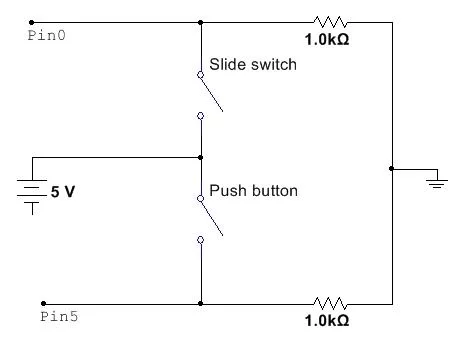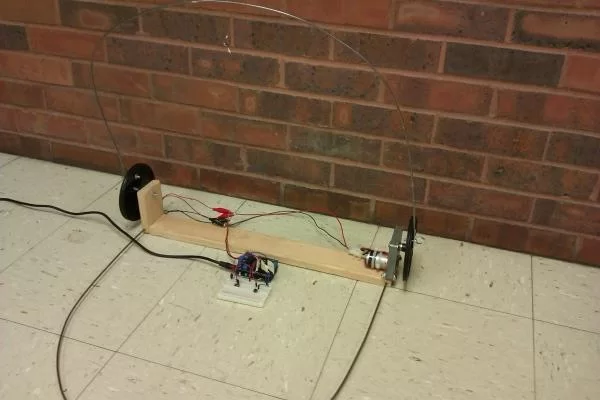Introduction
Our Motorized Wheelchair Canopy intends to help those people with disabilities that confine them to their motorized wheelchairs and need shelter at times of inclement weather, such as rain or extreme heat. Although manual wheelchair canopies do exist, no type of motorized wheelchair canopy currently exists in today’s market for purchase. People with disabilities that confine them to their motorized wheelchairs often have difficulties deploying a manual wheelchair canopy when needed, and express interest in purchasing motorized wheelchair canopies to improve their quality of living. Our Motorized Wheelchair Canopy intends to address these difficulties.
Our Motorized Wheelchair Canopy will consist of a motorized wheelchair canopy connected to a corresponding control mounted onto a motorized wheelchair. Our particular device will use a rocker switch control to obtain input from user to control direction and magnitude of extension/retraction of the motorized canopy and will use a battery to power the motorized canopy.
Materials Used for Motorized Wheelchair Canopy Prototype I
- 1 Arduino Uno
- 1 Adafruit Motor Shield
- 1 solderless breadboard
- 1 4-pin push button
- 1 6-pin 2-position switch
- 2 1kΩ resistor
- 1 24V DC gear motor
- Various connector electrical wires
- 2 4.9″ turntable wheels
- 2 1 1/4″ plate staples
- 4 10-24 3/4″ combination-head bolts
- 1 10-24 2″ combination-head bolt
- 6 10-24 nuts
- 6 10-24 washers
- 2 5/16″ screw eyes
- Various 1/2″ wood pieces
- Various wood screws and nails
- Wood glue
- 1 12V DC power supply
Description
Our Motorized Wheelchair Canopy Prototype I shows basic functionality of a simulated wheelchair canopy (attaching metal arcs to a prototype base simulates a canopy attached to a motorized wheelchair). Our user controls (4-pin push button and 6-pin 2-position switch) connected to our Arduino Uno programmed with appropriate code allows the user to control direction and magnitude of extension/retraction of the simulated wheelchair canopy. Using user controls, user will be able to rotate one metal arc, while other metal arc stays stationary. Detailed steps below show the progression of this Motorized Wheelchair Canopy Prototype I.

- Programmed Arduino Uno with following Arduino Uno code.
- Placed Adafruit Motor Shield on top of Arduino, ensuring that Power Jumper in place.
- Built 4-pin push button and 6-pin 2-position switch circuit using solderless breadboard, 1kΩ resistors, and various connector electrical wires as shown in following breadboard diagram under “Diagrams”.
- Attached 24V DC gear motor to position M1 of Adafruit Motor Shield and 12V DC power supply to Arduino Uno using various connector electrical wires to verify that motor works as expected.
- Constructed 20″ prototype base using various 1/2″ pieces of wood, wood screws, wood nails, and glue and mounted 24V DC gear motor using 5/16″ screw eyes.
- Attached 1 4.9″ turntable wheel onto 24V DC gear motor and attached 1 4.9″ turntable wheel (level to previously attached) onto opposite side of prototype base using 1 10-24 2″ combination-head bolt, 2 10-24 nuts, and 2 10-24 washers.
- Formed 2 1/8″ aluminum rods into 2 metal arcs (10″ short radius) manually.
- Mounted 1 metal arc to 2 4.9″ turntable wheels attached to prototype base using 2 1 1/4″ plate staples, 4 10-24 combination-head bolts, 4 10-24 nuts and 4 10-24 washers.
- Drilled holes into opposite sides of 1 side of prototype base to insert and secure other metal arc using wood glue.
- Set overnight to ensure stability.
- Verified that Motorized Wheelchair Canopy Prototype I works as expected.
For more detail: Shade Technologies – Prototype I Final Report: Motorized Wheelchair Canopy

